Jul 5, 2017
Participants group 1
Feb 8, 2017
New indoor shopping malls are springing up all over Ahmedabad. Larger shopping malls are especially popular. As a result, older shopping malls are declining in importance as neighbourhood meeting places, and vendors see their income drop. One of these old shopping malls is a market place from the 1920s. Up until ten years ago it was a good hang-out place. Now the square in the middle has been turned into a car park.
With this intervention, the group wants to change the point of view of people living in the neighbourhood, so that they will make use of the place again.
Music tracks are used as a metaphor, with different songs creating the same mood. The group identified two spaces: the temporary window where the vendors sell food, and the sand pit where one can experience something out of the ordinary, such as events or book exchanges.
The intervention makes each day of the week different from the others, one that offers different activities. Whatever the activity, it should encourage joy. The 1:1 model is built on site to be tested.
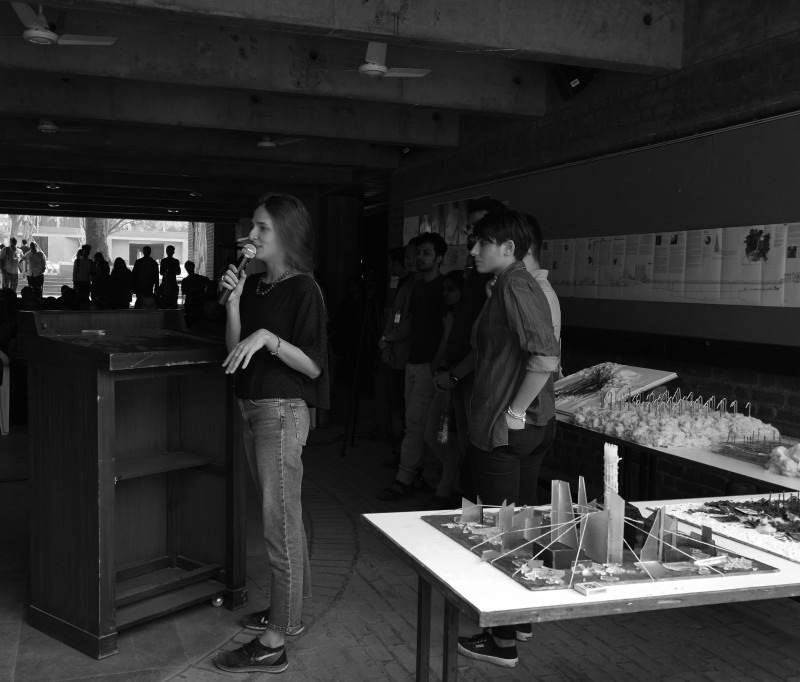
Feb 5, 2017
mid term presentation
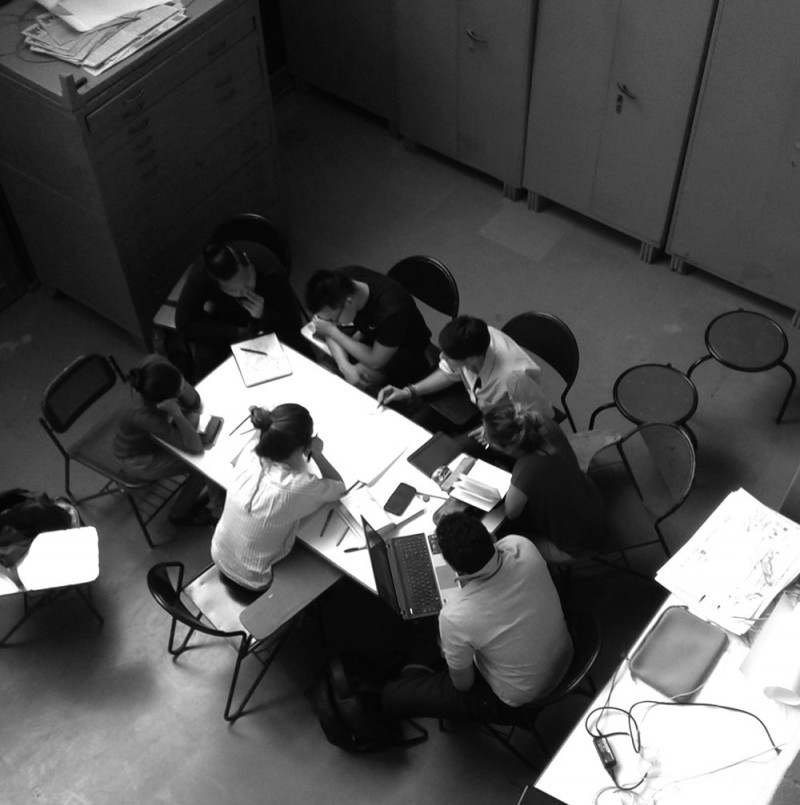
Feb 5, 2017
work in progress
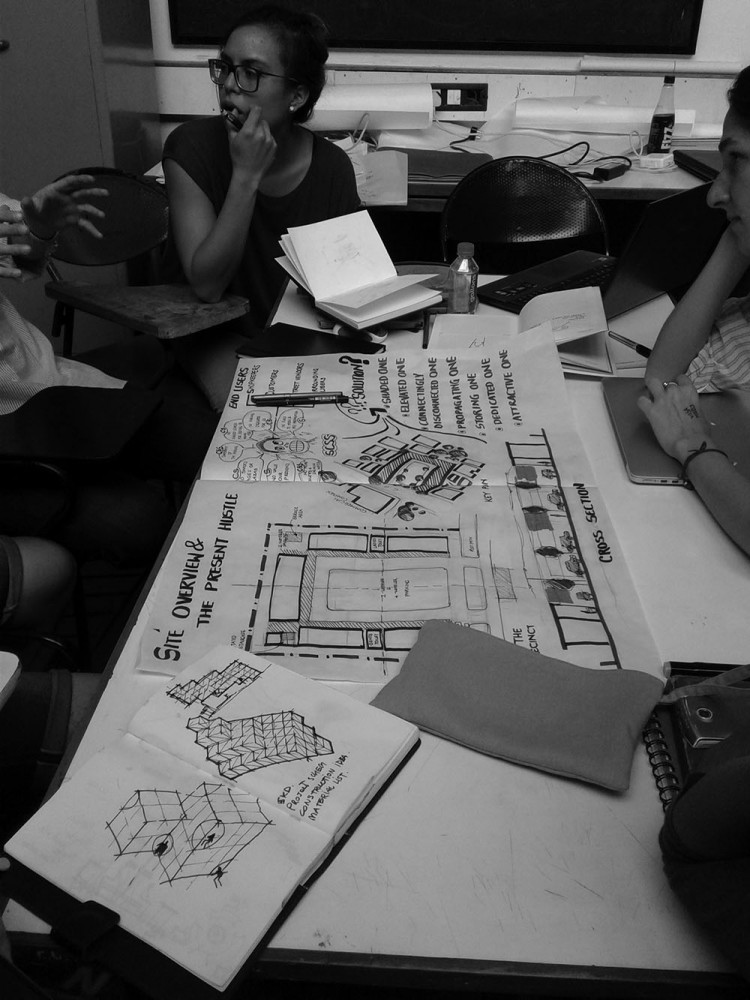
Feb 5, 2017
work in progress - Maria
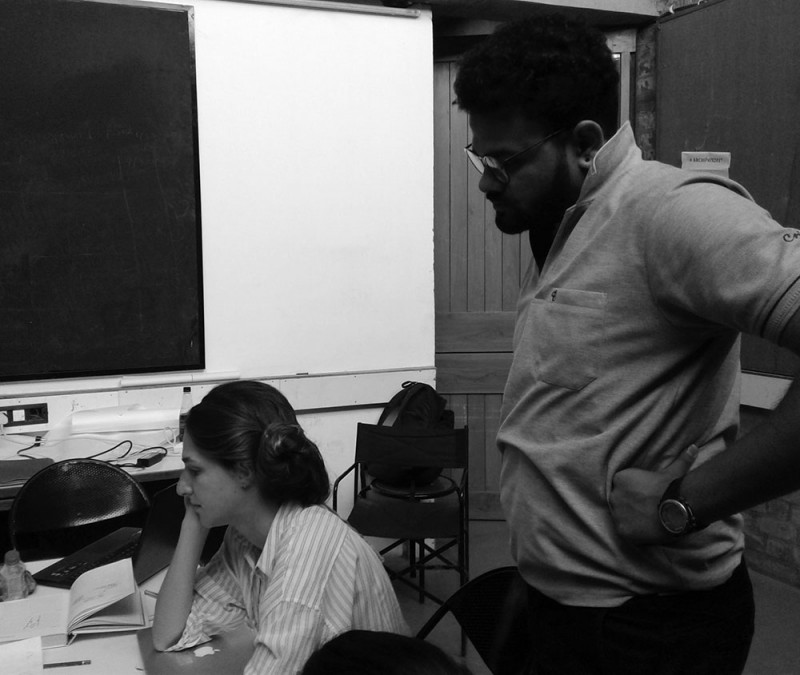
Feb 5, 2017
work in progress - Manuela and Ruturaj
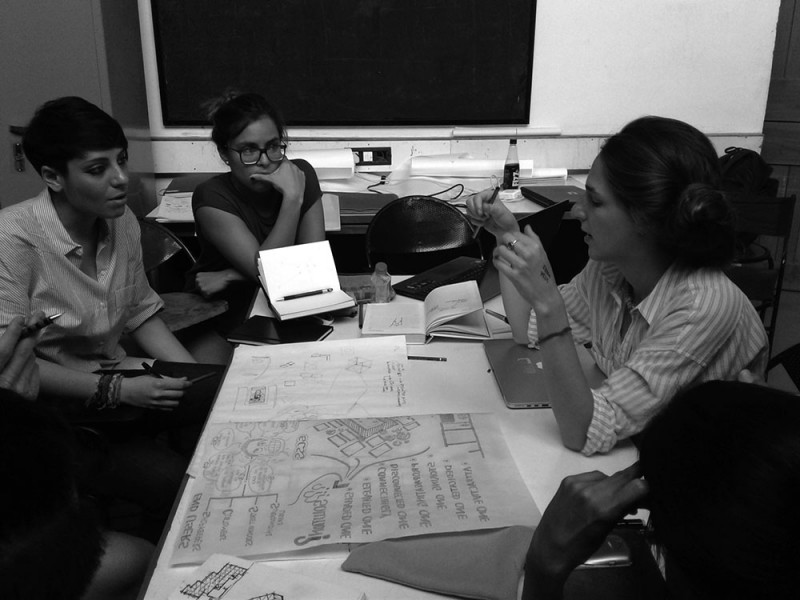
Feb 5, 2017
work in progess - Rachele, Maria and Manuela
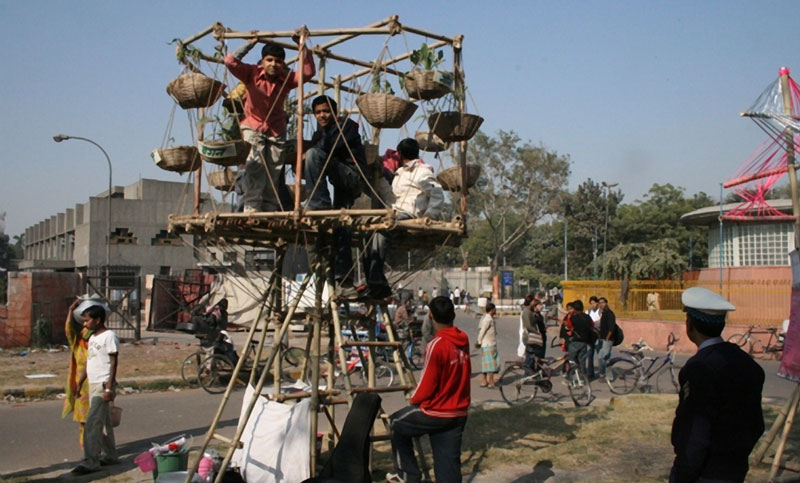
Nov 22, 2016
Hybrid Use Spaces - the informal economy and fluid communities
Ahmedabad is distinctly fractured. There is one aspect of the city’s life which is very pious and frugal and bases its value on community service and ethics. There is yet another aspect of the city which is speculative, expansive and entrepreneurial. I am not placing a moral value on either. Through the framework of a past project that I had done, I am suggesting that these two can be brought together. There can be a schematic for utility based public structures that incorporate cultural and social functions as well. Doing so will not only create a link between public needs and public imagination but will also attempt a connection between the urge to serve the public and the desire to render a service to the public and charge for it, thereby creating a sustainable node for trading within the community. The creation of such nodes is entrepreneurial at a scale which the voice and sentiment of the street can still be heard and reflected upon.
We will identify structures that the public space needs in terms of facilities that might need to be provided. Such structures might need to be provided in the form of services that are sold (chai shops, snack shops) or allowing communities to express or realise a need (play ground, local farm, medicinal plant herbarium). Once such structures are identified, they can be mashed together in different combinations based on aesthetic play, novel placement for neighbourhoods and an imaginative renewal of what has essentially become a dry and functional sprawl of a city.
Design professionals might enjoy and find meaningful their participation in a mashup exercise that also critically weighs the value of each new notion of the urban that each mashup proposes.
Purely functionalist approaches to crafting our urban neighbourhoods have failed and we need fiction, speculative storytelling and the crafting of dreamworlds in equal measure in order to create a certain fluidity that will put us all at ease.








